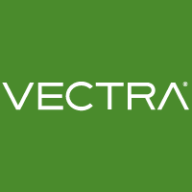

Vectra AI and ExtraHop Reveal(x) both compete in the threat detection and response category. ExtraHop Reveal(x) appears to have the upper hand due to its stronger data-decryption capabilities and customizable dashboards, which enhance its adaptability for in-depth analysis.
Features: Vectra AI reduces alert fatigue by consolidating alerts into actionable incidents, captures network metadata at scale, and provides visibility across attack lifecycles. ExtraHop Reveal(x) offers robust data-decryption, customizable dashboards for detailed analysis, and powerful visual representation of endpoint connections.
Room for Improvement: Vectra AI faces challenges with a complex licensing model, integration issues with third-party solutions, and limitations in fully replacing SIEM tools. ExtraHop needs to improve pricing transparency, VoIP monitoring capabilities, and simplify its license model for better scalability in smaller businesses.
Ease of Deployment and Customer Service: Vectra AI supports on-premises, hybrid, and public cloud deployments, with highly regarded customer service known for responsive support. ExtraHop Reveal(x) excels in on-premises and hybrid deployments and benefits from efficient communication and fast support turnaround.
Pricing and ROI: Vectra AI is costly due to its complex licensing but offers efficiency in reducing security incidents, enhancing ROI. ExtraHop Reveal(x), though also expensive, features a distinct cost structure focused on scalability. Both solutions would benefit from more transparent pricing models to aid organizations with budget constraints.
I would rate their technical support nine out of ten.
The support is quite reliable depending on the service engineer assigned.
When I create tickets, the response is fast, and issues are solved promptly.
Currently, we have to check manually as we do not receive any notifications about new patches, maintenance, or firmware releases.
I would like to see improvements in areas where events are getting dropped; we're not able to view complete insights.
ExtraHop's ability to decrypt encrypted data is a feature that Vectra AI lacks.
You need to have a Linux server, and from the Linux server, you must perform AI tasks, and there is a lot to be handled in the back end.
Neither Vectra nor Darktrace have a function like a status health check on my log sources and traffic sources.
Vectra is cheaper in terms of pricing and features compared to Darktrace.
It is very acceptable when you compare it with Darktrace, for example.
If I want to know a specific IP and which server it has been connected to, it's easy to gather those kinds of trees from the NDR.
The solution offers a friendly GUI for security features.
The main feature of Vectra AI that I find valuable is its focus on the user interface and its approximately two hundred algorithms based on artificial intelligence and machine learning.
There are extensive out-of-box detection capabilities.
| Product | Market Share (%) |
|---|---|
| Vectra AI | 15.0% |
| ExtraHop Reveal(x) | 7.9% |
| Other | 77.1% |


| Company Size | Count |
|---|---|
| Small Business | 3 |
| Midsize Enterprise | 4 |
| Large Enterprise | 9 |
| Company Size | Count |
|---|---|
| Small Business | 9 |
| Midsize Enterprise | 10 |
| Large Enterprise | 27 |
ExtraHop Reveal(x) is a highly effective network traffic analysis (NTA) solution that leverages a cloud-native architecture to empower organizations to overcome a world filled with increasingly sophisticated threats. It identifies 25% more threats than its competitors. Additionally, organizations that employ Reveal(x) say they resolve issues 77% percent faster than they would if they were using other similar solutions.
ExtraHop Reveal(x) Benefits
Some of the ways that organizations can benefit by choosing to deploy ExtraHop Reveal(x) include:
ExtraHop Reveal(x) Features
Reviews from Real Users
ExtraHop Reveal(x) is a solution that stands out when compared to many other similar solutions. Two major advantages that it offers are its versatility and its ability to quickly identify the root cause of an application’s issues.
John B., the senior monitoring engineer at a financial services firm, says, “It's useful for different teams in our organization. The cybersecurity team uses it because it has got great analytics for anomaly detection, malware detection, and ransomware. It's used by the networking people because it's great to be able to get the three-way handshake between systems to see how your network is doing. The microservices for DNS use it because they like to be able to see how their DNS services are operating and how many DNS requests are being rejected, denied, or dropped. Application people love it because it fully decrypts their traffic.
Henry S., a systems engineer at LifePoint Health, writes, "When there are performance issues with an HTTP app, ExtraHop enables us to identify the causes within a few minutes. We can see what transactions are being impacted by something that may be happening within the server environment."
Vectra AI enhances security operations by pinpointing attack locations, correlating alerts, and providing in-depth visibility across attack lifecycles, ultimately prioritizing threats and improving incident responses.
Vectra AI integrates AI and machine learning to detect anomalies early and supports proactive threat response. Its features like risk scoring, alert correlation, and streamlined SOC efficiency are supplemented by integration with tools like Office 365. Users highlight integration, reporting, and customization challenges, alongside limitations in syslog data and false positive management. They seek enhancements in visualization, UI, TCP replay, endpoint visibility, and tool orchestration, with requests for improved documentation, licensing, and cloud processing innovation.
What are the key features of Vectra AI?In industries like finance, healthcare, and critical infrastructure, Vectra AI is crucial for threat detection and network monitoring. Entities use it for identifying anomalous behaviors and enhancing cybersecurity by responding to network activities and analyzing traffic for potential breaches. It operates on-premises and in hybrid cloud settings, enabling threat detection without endpoint agents and supporting compliance and policy enforcement.
We monitor all Network Detection and Response (NDR) reviews to prevent fraudulent reviews and keep review quality high. We do not post reviews by company employees or direct competitors. We validate each review for authenticity via cross-reference with LinkedIn, and personal follow-up with the reviewer when necessary.